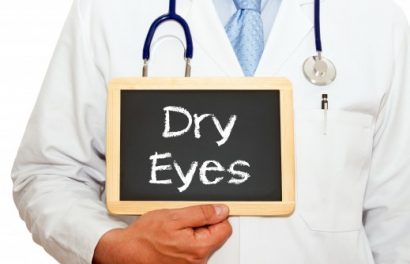Schirmer’s Testing for Dry Eye Syndrome
Written by Dr. David Evans Last modified on August 6, 2018
We’re in the thick of the winter season and for many that means dry eyes. The cold, winter months are a breeding ground for dry eye symptoms. But as the season shifts, most will see the nuisance of dry eye dissipate with the weather. However for those with dry eye syndrome, the seasonal change will do nothing to address the problem.
Dry eye syndrome is a chronic condition marked primarily by an insufficient flow of tears. Dry eye is often affected by environmental factors (as is the case with winter weather), but for those suffering with dry eye syndrome there can be other issues at play. The question is, how do you know when your dry eye is a temporary problem or a chronic syndrome? Today I want to speak about the most common dry eye syndrome test, the Schirmer’s Test.

The Schirmer’s dry eye test is named after Otto Schirmer, a 19th century German ophthalmologist. Simply stated, the pain and risk-free noninvasive test is designed to measure whether or not the eyes are adequately producing tears. (The test can also determine if you’re producing excessive tear flow.) Tears are essential to eye health, providing moisture and lubrication, in addition to helping fend off infection.
To perform the Schirmer’s test, your eye doctor will gently place paper strips under the bottom eyelids. (If you wear contacts or glasses you will need to remove them for the test.) The paper can be somewhat irritating, so your doctor may use numbing drops to prevent any sort of reactive tear from interfering with the results. The papers are left in place for approximately 5 minutes, during which time you will be required to keep your eyes closed. After 5 minutes the papers are carefully removed and measured for moistness. Somewhat counterintuitively, it’s not a measure of tear volume. Instead, the length of the moisture trail on the paper is measured. Normal tear production should yield moisture trails of at least 10 millimeters. Anything less than 10 millimeters suggests an inadequate tear flow and dry eye syndrome. Additional testing would be required to determine the root cause.
Your eye doctor will advise you to avoid rubbing your eyes for 30 minutes or so after the test. Patients with contact lenses will similarly be advised to avoid replacing them for upwards of 2 hours.
The Schirmer’s test is certainly the most common, but more and more this traditional test is being replaced by newer methods; those are for another day.
For more information, check out our article on dry eye syndrome.
